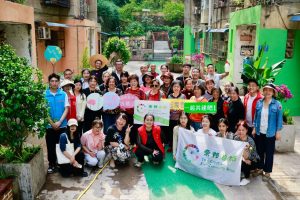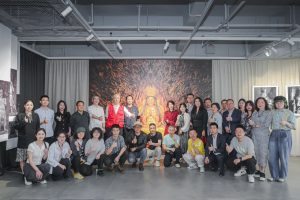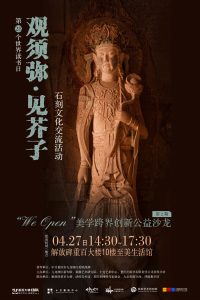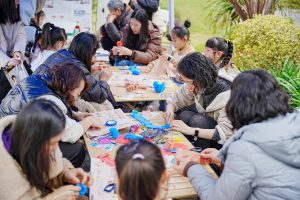歷史網站|Historical Website:
藝術與區域構建|Art and Regional Contribution:
十方藝術中心坐落在重慶市九龍坡區黃桷坪,這是一個實際的地點、一個豐滿的地方。十方社群中的諸多夥伴,也與這個「地方」有著千絲萬縷、綿長的線索和情感。作為這裡的居民,也作為這裡的在地民間機構,我們很自然、也更具責任感的想到如何將機構的力量與地區構建相輔相成,並實際展開實踐。通過駐留計劃和創研計劃,國內外藝術家、策展人、設計師、創業者、知識份子等,齊聚黃桷坪,在機構的對接和組織下,深入瞭解地區發展階段和相應問題,與當地政府部門、社區公眾交互,以大型復合類「藝術與社會項目」、「社區美育工作坊」、「常態化展覽」等方式,回應區域建構過程中的文化傳承、社群更新、產業升級等問題,其中,還疊合了國內外高校專題項目、基金會項目等。
十方從自身所在的區域,開始探索藝術參與、助力區域構建,獲得先行經驗和成果,並試圖將相關經驗成果進行模式輸出,力求在藝術群體的參與下,更好的回應不同類型的區域構建問題,藝術的定義、概念、可回應的問題、可扮演的角色,在中國廣大而多變的、不同尺度的現場下,仍是混沌而略顯無力的狀態,這一切的嘗試都還在過程中。
Dimensions Art Center is located in Huangjueping, Jiulongpo District, Chongqing. This is a real place and a place with rich content. Many DAC community partners also have inextricable and long-lasting clues and emotions with this “place.” As residents here and as local non-governmental organizations here, we naturally and have a sense of responsibility to think about how to complement the organization’s power and the region’s construction and carry out the practice. Through residency programs and innovative research programs, domestic and foreign artists, curators, designers, entrepreneurs, intellectuals, etc., gathered in Huangjueping to understand regional development related issues under the linkage and organization of institutions. Local government and the public in the community interact with a large-scale composite “art and social projects,” “community aesthetic education workshops,” “exhibitions,” and other forms to respond to cultural heritage, community renewal, and industrial upgrading in the process of regional construction. There are also special projects of domestic and foreign universities and foundation projects.
DAC began to explore art participation and assisted regional construction from the region where it was located, and obtained first-hand experience and results, and tried to export relevant experience results in a model, and strive to better respond to different types of regional construction with the participation of the art community problem. The definition, concepts, responsive questions, and roles that art can play are still chaotic and slightly weak in China’s vast and changeable society at different scales. All these above attempts are still in the process.
1. 藝術與區域構建 - 駐留|Art and Regional Contribution - Residency:
在藝術與社會的互融共生的行動願景下,為帶動區域藝術文化生態的構建,促進地區地域文化、創新活力、國際開放的綜合發展。面對國際網絡全面深化、社會結構快速更替、社會現象多元變化的時代,我們需逐漸理清文化藝術與國際聯動、地區發展、產業鏈接、小區民生交互共融的關係邏輯,使藝術行動與社會需要相契合。
為此,十方國際駐留計劃以藝術家駐留計劃為內容核心,以藝術家駐留展覽、主題性社會項目為載體,同時集結青年策展人、研究學者、文創工作室等專業知識族群共同行動,通過駐地調研實踐、現場交互、活動發聲,進行藝術內容面對社會現場的多維交互。同時項目實踐中聯動國際機構、當地政府、事業單位、社會企業及媒體等社會各方,鏈接可互促發展的各領域資源,進行合理的社會協作與資源匹配,力求充分體現藝術的社會性意義。此外在行動中反思自身知識邏輯與區域構建的元生關係,為促進專業知識族群的活力創新和藝術文化的多元生長,實現區域構建發展與文藝共生。
Under the vision of the symbiosis of art and society, promoting regional art and culture ecology contributes to the comprehensive development of local culture and innovation vitality. Facing the era of comprehensive deepening of international networks, rapid changes in social structure, and diversified changes in social phenomena, we need to gradually clarify the logic of the relationship between culture and art and international linkage, regional development, industrial links, and community and people’s livelihoods.
DAC Artists In Residency (DAIR) takes the artist residency program as the core content, uses artist residency exhibitions and thematic social projects as the carrier, and gathers young curators, researchers and independent studios, and other professional groups. We took action through resident research and practice, on-site interaction, activity voice, and multi-dimensional interaction between artistic content and social scene. At the same time, in project practice, we will link international organizations, local governments, public institutions, social enterprises, and media to gather resources in various fields that can promote mutual development, carry out good social collaboration and resource matching, and strive to reflect the social significance of art fully. Besides, we reflect on the primary relationship between our knowledge logic and regional construction in action, promote the vitality and innovation of intellectual groups and the diversified growth of art and culture, and realize the development of local construction and the symbiosis of art and culture.
2. 藝術與區域構建 - 創研工坊參與社區美育|Art and Regional Contribution - Workshops & Community Aesthetic Education:
2019年,十方藝術中心受重慶市九龍坡區黃桷坪街道辦邀請,為黃桷坪社區居民提供美育服務。十方創研平台5家工坊參與,為黃桷坪郵電路、唐家灣、新市場等社區提供了15場居民美育課程。同時創研工坊與公益組織求至社工合作,共同設計完成了南岸區梨花路社區3場居民美育課程。以社區提高居民的審美素養,豐富業餘生活,為文創產業發展探索新的可能性為出發點,藝術家導師根據居民的基礎水平,原創設計課程,在持續半年的活動中,教與學,課程產品三方面都有所收穫,最重要的是,居民每次在短暫的課程中,確實感覺到身心愉悅,這也給授課藝術家很深的觸動,為藝術家和居民之間建立起一種深入溝通的可能性。
相較於專業的學院式藝術教育,社會美育的現場中,受制於各種現實條件,發展較為艱難。如社區經費不足,導致項目延續性不足;居民的需求不明確,參與相對被動,對於審美能力提高缺乏現實動力;缺乏具備教學能力的師資等。這些問題亟待各方在公共美育實踐中解決。
蔡元培先生在中國現代化之初提出,以美育代宗教,啓發國民民智。如今國人的物質生活水平相較百年之前已極大提高,而國人的審美能力,仍未有多少增長,反而在物欲橫流的世界中,精神更加空虛,缺乏依託。十方作為一家藝術類的社會公益組織,對於居民美育有著不可回避的社會責任。創研平台在社區開展的居民美育課程,開啓了十方深度參與社會美育的模式實踐。
In 2019, Dimensions Art Center was invited by the Huangjueping Sub-district Office of Jiulongpo District, Chongqing City, to launch aesthetic education to the Huangjueping community residents. Five workshops on the DAC Culture Creation and Research Platform (DCCR) participated and provided 15 residents’ aesthetic education courses for Huangjueping Youdian Street, Tangjiawan, Xinshichang, and other communities. Simultaneously, the DCCR Workshop and the charity organization Seeking to cooperate with social workers, jointly designed and completed 3 residents’ aesthetic education courses in Lihua Road Community, Nan’an District. They are taking the community to improve the residents’ aesthetic quality, enrich their lives, and explore new possibilities for developing the creative industry. The artist tutors designed initially courses based on the residents’ needs. In the activities that lasted for six months, teaching and learning, curriculum products There are gains in three aspects. The most important thing is that the residents feel physically and mentally happy every time they take a short course. This also touches the artist deeply and establishes an in-depth communication between the artist and the residents.
Compared with professional academic art education, social, aesthetic education is subject to various realistic conditions and development. For example, insufficient community funding leads to short project continuity. Their participation is relatively passive, and they lack the real motivation to improve their aesthetic; they lack tutors with teaching abilities. These problems urgently need to be resolved by all parties in the practice of public aesthetic education.
At the beginning of China’s modernization, Mr. Cai Yuanpei proposed to replace religion with aesthetic education and inspire people. Nowadays, the Chinese people’s material standard of life has been dramatically improved compared to a century ago, and the Chinese people’s aesthetic ability has not increased much. On the contrary, in the materialistic world, the spirit is more empty. As an art and social welfare organization, Dimensions Art Center has an unavoidable social responsibility for residents’ aesthetic education. The residents’ aesthetic education courses carried out by the DCCR platform in the community opened the practice of Dimensions Art Center’s deep participation in social, aesthetic education.
3. 綜合項目|Com-Projects:

回顧|“時光煥新綠·萬家種春風”光榮坡社區“特鋼”生態花園植物種植共建活動

十方活動|“’桷’對青春”青年夜校,最新課程預告~

“觀須彌·見芥子”石刻文化交流活動回顧|第2期“We Open”美學跨界創新公益沙龍

“觀須彌·見芥子”石刻文化交流活動|第2期“We Open”美學跨界創新公益沙龍

活動回顧|藝術與自然的春日邂逅——第三屆“自然重慶”嘉年華
4. 社會項目|Social Projects:
通過藝術&社會項目的開展,十方在區域藝術生態構建、城市社區營造、傳統產業轉型、新農村建設、文化資源保護等方面實踐著藝術的力量。根據不同的項目類型,組建聯合專業工作團隊,團隊包括項目所需的各專業方向人才,如城市規劃、建築設計師,科學家,社會學者、民間手工藝人、藝術家、策展人、原住族群等,進而滿足項目的各方面專業需求,實現人才的跨界學習和協作。
The DAC art & society projects are designed to contribute to the development of the art and culture industry, shaping urban community life, transforming and upgrading traditional industries, and preserving cultural resources. Professionals such as urban planners, architects, scientists, sociologists, folk art craftsmen, artists, curators and local dwellers are recruited for those projects.
5. 藝術與教育 - 四川美術學院|Art and Education - Sichuan Fine Arts Institution:
2015年中旬,四川美術學院提出全面本科個性化教學改革計劃——特色工作室計劃應運而生,作為本項教學改革計劃的重要組成部分,曾途跨媒體特色工作室計劃旨在面對新的時代語境,基於中國的開放社會為藝術在地重生的場域,進行藝術研究、創作、教育的轉型與實驗。
2016年,四川美術學院實驗藝術學院開設「藝術與社會」專業教研室,這是繼四川美術學院個性化特色工作室計劃後,正式將美術學實驗藝術學科的本科教育方向引領進入以中國當代社會為語境的全新專業現場。
以上兩個事件,是中國社會新時代語境下,藝術高等教育所面臨的巨大時代變遷縮影,如何將藝術教育與社會生態交融,離開象牙塔與白盒子的舒適區,藝術生態如何真正扎根於中國的社會生態?十方作為一家以藝術在地為宗旨的民辦非企業社會組織,也在高校教育與社會現場間漸漸尋找到自己的位置,成為二者的紐帶和橋梁。
In mid-2015, Sichuan Fine Arts Institute proposed a comprehensive undergraduate personalized teaching reform plan—the specialized studio project came into being. As an essential part of this teaching reform plan, the Zengtu Cross Media Studio aims to face the new context of the times, based on China’s open society as a field for the rebirth of art, conducts the transformation and experimentation of art research, creation, and education.
In 2016, the School of Experimental Art of Sichuan Fine Arts Institute opened the “Art and Society” professional teaching and research section. This is to formally lead the undergraduate education of the experimental art subject of fine arts into a new professional scene in the context of contemporary Chinese society following the specialized studio project of the Sichuan Fine Arts Institute.
The above two events are the epitome of the significant changes that art education faces in the new era of Chinese society. How to integrate art education with society, leaving the comfort zone of ivory towers and white boxes of the gallery, and how art ecology truly takes root in China’s social ecology? As a private non-corporate social organization with local art, Dimensions Art Center has gradually found its place between art education and society and becoming a link and bridge between the two.
6. 藝術與公益 - 特殊人群公益項目|Arts and Philanthropy - Philanthropy Projects for Disadvantaged Groups:
藝術本身具有非功利性,這與公益事業的根本目標是契合的。但在現代社會學科分科和人們的日常經驗中,藝術和公益在價值訴求、工作方法、社會效益等方面都分屬不同領域。十方作為一個具有藝術專業背景的非盈利性社會機構,從合法註冊那天起,就兼具藝術與公益的雙重屬性。在實際工作中藝術和公益並沒有緊密交互融合,這給我們的工作帶來很大挑戰,但也是我們得以在這方面發力的契機。藝術家擁有許多創新性才能,可以為公益領域帶來新的思考方式和提升解決問題的能力,藝術家對於社會公益的責任和熱情,也需要表達呈現的方式。讓藝術家和公益人士協作,需要構建中間平台和新的工作方法,目前十方在這方面已經探索數年,創立了復合型的工作方法和團隊,以持續項目的方式建立起各種藝術與公益的中間橋梁,並顯現出一定的社會成效。我們開展了如下幾方面的實踐探索工作:一.支持殘障人士藝術能力發展;二.支持公益機構組織開展藝術活動;三.支持公益機構文創產業發展;四.與公益社工組織合作參與社群重構及社會基層治理。
Art itself is non-utilitarian, which is consistent with the fundamental goal of public welfare. But in the division of modern social disciplines and people’s daily experience, art, and general interest belong to different fields in terms of value appeal, working methods, and social benefits. As a non-profit social organization with a professional background in art, Dimensions Art Center has the dual attributes of art and public welfare from legal registration. In work, skill and public welfare are not near integrated, which brings significant challenges to our work, but it is also an opportunity to make efforts in this area. Artists have many talents, bringing new ways of thinking and improving public welfare’s problem-solving ability.
Artists’ responsibilities and enthusiasm for social welfare also need to be expressed in the way of presentation. It is necessary to build an intermediate platform and working methods to allow artists and charity individuals to collaborate. At present, Dimensions Art Center has been exploring this area for several years, creating a diverse working method and team, and establishing various arts and charity in the form of ongoing projects. We have carried out the following work: 1. Support the development of the artistic ability of the disabled; 2. Support the organization of art activities by public welfare organizations; 3. Support the development of the cultural and creative industry of public welfare organizations; 4. Cooperate with social welfare work organizations to participate in the building of community and governance of society.
